
By Jessica Kirby • Photos courtesy of Patkau Architects + Smith Sheet Metal
Smith Sheet Metal Works Ltd. is on a mission. Over the past year, the 10,000-square-foot fabrication shop in Port Coquitlam has more than doubled its size in both volume and labour, taking on larger, more complex projects than the small-sized company ever has before.
“We’ve always been a lesser-known contractor, but because of our high construction standards, never-cutting-corners mentality, ethics, and various changes in our local industry, there have been more direct requests for our team lately,” says owner Aaron Smith. “We have decided this is a good time to embrace that and roll with it because the opportunity is there.”
Smith is seizing every opportunity, including succession planning, since his son, Jacob, joined the business a year and a half ago and has started his apprenticeship.
“He is keen to follow in our family tradition and he is doing it the right way, in the trenches, learning the most difficult parts of the job and working his way up,” Smith says. “He will be a fourth-generation sheet metal worker, and that is also fuelling change in our company.”
Part of this growth was winning the company’s largest and most complex project to date: UBC School of Biomedical Engineering (UBC SBME). The school brings together more than 500 students annually who were previously scattered across 24 buildings on UBC’s Vancouver campus. The new, five-storey, 156,400-square-foot, purpose-built facility has a $139.4 million budget and includes classrooms and learning spaces on the lower floors, with research labs and spaces on the upper floors.

Smith Sheet Metal’s $5 million scope includes all of the metal work, including the galvanized ducting, ventilation, and stainless exhaust duct for the labs and clean rooms. The scope amounted to over 28,000 lbs of welded stainless steel and 220,000 lbs of galvanized steel. It started off with a three-year timeline that was later compressed into 18 months.

“Because of that, we ended up needing 20 workers full-time on the site for a year,” Smith says. “We thought we would need ten. We were a company of 25–27 people, but we had some luck with picking up skilled labour and that made fulfilling the requirements a lot easier. Now we are a company of 50 and still growing.”
This project was different from anything Smith Sheet Metal has done before. The sheer volume of duct work and exhaust lines for the fume hoods, all stainless and welded, was immense.
“The lab’s main exhaust lines are 40 inches in diameter running through the building from the basement and out to massive plume exhaust fans mounted to the roof,” Smith says. “The clean rooms had extremely high standards for indoor air quality and cleanliness and had to be pressure tested to extremely low leakage standards.”
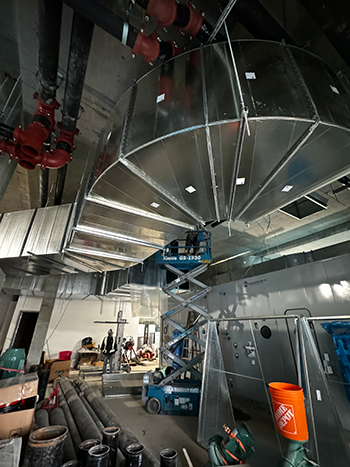
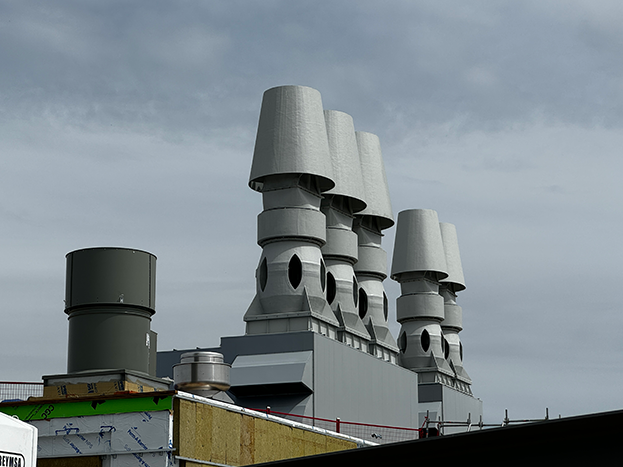
The project’s location in the middle of UBC’s Vancouver campus posed a few challenges, including the need to shuttle workers to the jobsite because there is a lack of parking. Deliveries have to be timed and coordinated, and shipping and receiving times were pre-planned.
“Because it is a biomedical building there are also cleanliness requirements and restrictions on things like where you can eat,” Smith says.
These and other firsts pushed the company to exploit their own best resources—people and leadership—to take on this project, which is redefining the company’s future.
“We are technically still classified as a small company, so manufacturing the duct in our shop to these new levels while doubling our output of fabricated materials was a challenge,” Smith says. “One thing we had going for us is that we have a stainless-steel division in our company through which we build a lot of food service products. Our team really pulled it together to continuously meet the demands of this high-paced schedule.”
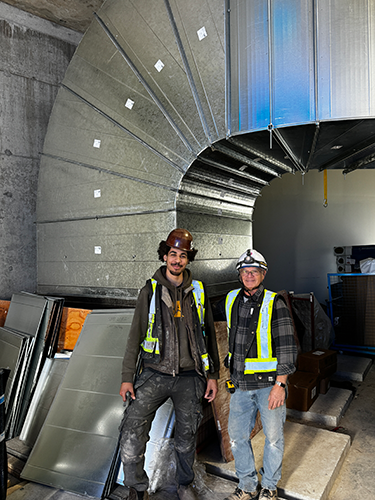
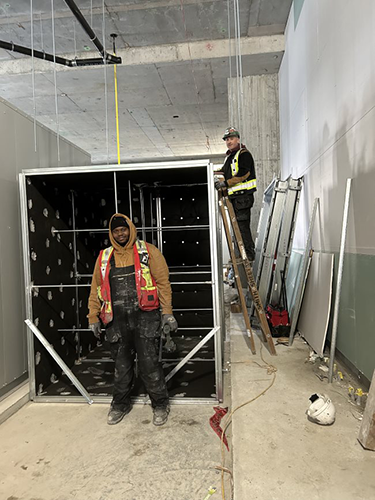
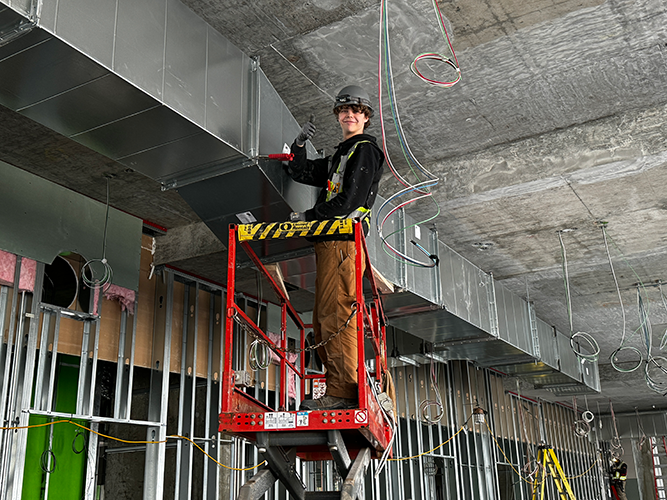
That division routinely manufactures kitchen canopies, sinks, specialty tabling for restaurants, cutting tables, and cabinets. “Already having highly qualified stainless welding expertise in our shop made the lab requirements at UBC SBME an easy transition,” Smith says.
Another of the building’s showcase spaces is the mechanical room, located on the roof of the building. It houses four 110,000 cfm Scott Springfield air handlers and the main trunk ductwork is 120” x 96” in size.
“The ductwork in this mechanical room is impressive,” Smith says. “I have an amazing group of people working on this project.
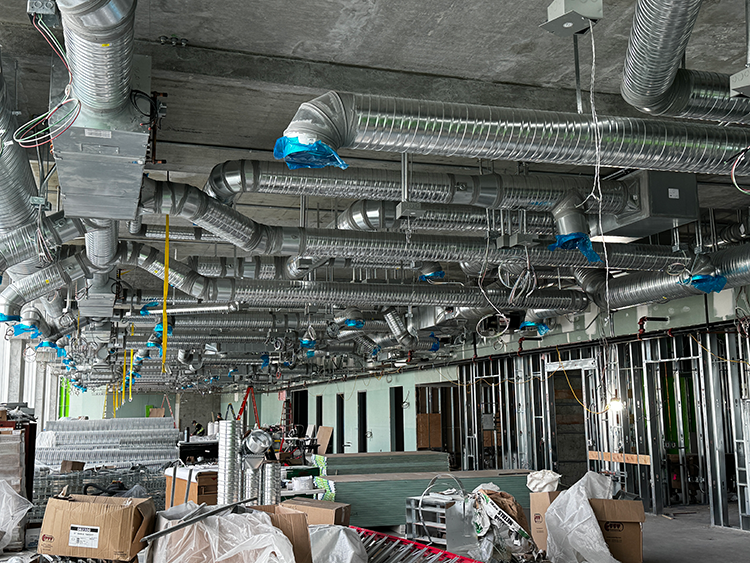
“Larger companies are used to this kind of thing, but it is not something we usually see,” he adds. “Our team has embraced this project and done exceptionally well. We are ahead of schedule, on budget, and when the project is done, it will be a feather in our cap.” ■




